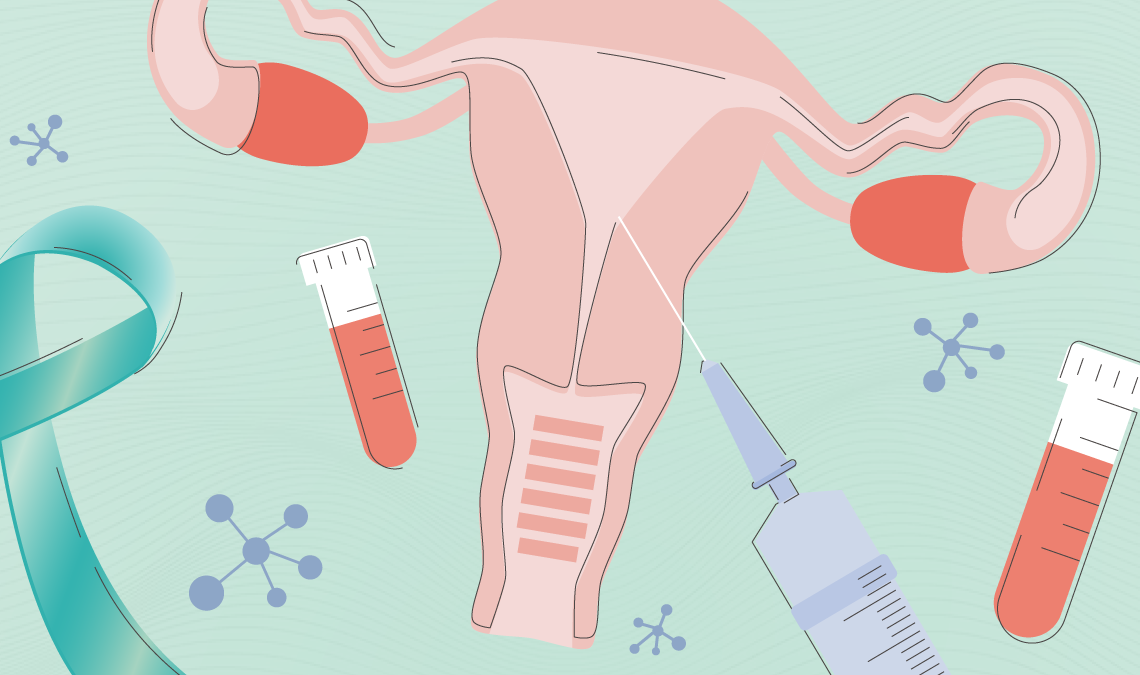HPV or Human papillomavirus is something that’s often overlooked, but it’s time we have a candid conversation about it. You’ve probably heard the term tossed around in your gynaecologist’s office or during a quick Google search, but do you really know what it means?
Spoiler alert: It’s way more common than you think, and understanding it could be a life-saver – literally.
What is HPV?
HPV, or human papillomavirus, is a group of more than 200 related viruses. Think of it like the overly friendly guest at a party — most people will encounter it at some point, and it’s really good at making itself at home.
According to the WHO, almost all sexually active people will be infected by HPV at some point in their lives, usually without symptoms. That’s how common it is! And if you’re thinking, “This can’t be true in India too,” think again. Almost 75% of all sexually active adults in India are likely to be infected with at least one HPV type, based on this NIH study.
While there’s hundreds of HPV strains, only about 30 HPV strains can affect your genitals by causing genital warts, rough, cauliflower-like lumps that grow on your skin. They could appear on your vulva, vagina, and cervix, as well as your rectum and anus. If you’re someone who doesn’t have some of these parts, you’re not out of danger, it can affect your penis and scrotum, too.
They may also appear like skin tags, and show up weeks, months or even years after you’ve been infected with low-risk HPV. They can also be itchy and very uncomfortable. Learn more about early signs here.
But that’s only if you have one of those 30 strains. Other strains are asymptomatic and transient, meaning they often resolve on their own without causing any visible signs. And while that sounds like a good thing, it may not be. You’ll find out why as you read on…
How Do You Get HPV?
HPV doesn’t discriminate. It’s the most common sexually transmitted infection (STI), and it’s ridiculously easy to get. You can contract it through vaginal, anal, or oral sex, and while condoms or dental dams reduce the risk, they don’t completely eliminate it. Why? Because it isn’t just about bodily fluids; it’s about intimate, skin-to-skin contact – think fingers and palms, as well.
Here’s where things get complicated: Most people never even realize they have an HPV infection because it often doesn’t cause symptoms. It’s the ultimate silent passenger, coming and going without making a fuss. And that’s where things get prickly (no pun intended).
Why? Because if you don’t have symptoms, you’ll never know you have an HPV infection, you won’t know that your risk of developing certain cancers has increased. Plus, if you don’t know you have an HPV infection, you may spread it to other people – at best making them uncomfortable and at worst, increasing their risk of developing certain cancers too! You won’t seek medical advice and information you need, won’t get screened or go for check-ups.
The Stigma and the Stats
Like any STI out there, there’s a weird stigma around HPV, even though it’s so common it’s practically a rite of passage. So if you’ve been diagnosed with it, you can find solace in the fact that you’re not alone. Studies in India suggest that about 26.1% of women aged 18-45 have an active HPV infection at any given time. And while genital warts can be an obvious sign (in 2-25% of those infected), the truth is, most people will never know they’re infected unless they’re specifically tested for it.
The tricky part? There’s no outright cure for HPV. That’s where the stigma comes in. Because sexual or not, living with an infection or disease feels…uncomfortable and might affect your confidence. But there’s a silver lining — for most people, the immune system fights it off within a couple of years. The key is to schedule regular tests, (every 6-12 months) until you know you’re in the clear.
However, in some cases, the virus sticks around. Quietly causing changes to your body’s cells. That’s when cervical cancer enters the chat.
The Link Between HPV and Cervical Cancer
When we talk about HPV, we can’t skip its role in cervical cancer. While less than 1% of HPV infections escalate to cervical cancer in India, it is responsible for nearly 77% of cervical cancer cases, making it the leading cause of that particular cancer. That’s a staggering statistic, and it’s why understanding HPV is so crucial.
Cervical cancer starts when certain high-risk types of HPV (there are at least 14 of them, but in India HPV 16 and HPV 18 are the most common) cause abnormal changes in the cells of the cervix, the ring-like opening between the uterus and the vagina. Over time, if these changes aren’t detected and treated, they can develop into cancer.
The cancerous changes aren’t instant — they can take years, even decades. That’s why regular screenings, like Pap smears and HPV tests, are so important. They catch those abnormal changes early, giving you the chance to address them before they turn into something more serious.
It’s worth noting that while cervical cancer is the most common HPV-related cancer, it’s not the only one. HPV can also lead to cancers of the vagina, vulva, penis, anus, and throat. But cervical cancer is by far the one most strongly tied to the virus, making it a focal point of prevention efforts.
Protecting Yourself: The HPV Vaccine
Currently, the only way to prevent HPV infections without medical intervention is by abstinence or lifetime mutual monogamy. And let’s be real, that’s not a very practical way of thinking about this. Enter the HPV vaccine!
It protects against the most common high-risk strains of the virus, including the ones most likely to cause cervical cancer and genital warts. The vaccine is now included in India’s national immunization program for girls aged 9-14, but adults – both men and women – up to age 45 can also get it.
If you haven’t gotten vaccinated yet, it’s worth talking to your healthcare provider. The vaccine doesn’t treat an existing human papillomavirus infection, but it can protect you from other strains you haven’t been exposed to yet, possibly ones that increase your risk of cancer.
The impact of the vaccine is already being felt globally, and India is starting to see progress, too. Studies show that vaccination could reduce the prevalence of HPV 16 and HPV 18 infection by 97% and the lifetime risk of cervical cancer by 71–78% in India, if widely adopted. However, barriers like lack of awareness and cultural taboos still exist. Breaking these down is key to protecting the next generation.
Breaking the Silence
Talking about HPV, cervical cancer, and the vaccine might feel awkward, but silence only feeds stigma. The more we normalize these conversations, the more we empower ourselves and others to take control of our health.
HPV is common. It’s silent. But it doesn’t have to be scary. Whether it’s scheduling a Pap smear, learning more about the vaccine, or simply sharing this article with a friend, every step you take matters. Protect your health, protect your loved ones’ health, break the stigma, and let’s keep the conversation going.
Is there anything more you’d like to know about HPV, the vaccine or Cervical Cancer? Leave your questions in the comments and we’ll answer them!



